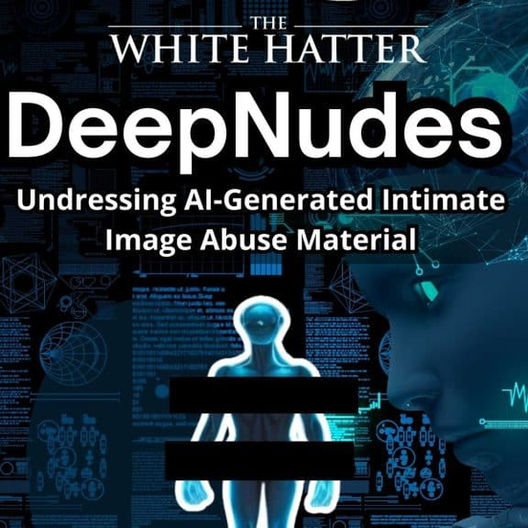At The White Hatter, We Teach Youth and Teens to Understand Technology, Not Just How To Use It!
- The White Hatter

- 3 days ago
- 4 min read

Walk into almost any modern classroom today and you’ll see the hallmarks of a today’s connected online world with smart-boards instead of chalkboards, tablets and laptops instead of textbooks, and online learning platforms instead of handouts. On the surface, this looks like progress. However, while we have modernized what students use, parent, caregivers, and educators haven’t always modernized how they think about its use.
Many youth and teens today know how to navigate an iPad, download an app, or complete a Google search. However, ask them why a certain video shows up first on YouTube, how social media algorithms decide what they see, or who profits from their data, and the answers often stop short. They’ve been taught to use technology, not to really understand it.
When young people don’t understand the systems behind the tools they use, they can become passive consumers instead of active thinkers. For example, a teen might not realize that TikTok’s “For You Page” is designed to maximize time on the app by tracking micro-behaviours such as how long they pause, what they replay, or which sounds they interact with. That lack of awareness makes it easy to confuse what the algorithm serves up with what’s actually relevant or true.
Similarly, when a youth or teen uses generative AI like ChatGPT or an essay-writing bot, they may view it as a shortcut rather than a tool that needs critical oversight. If they don’t ask who trained it, what data it uses, or what its limitations are, they risk accepting biased or incomplete information as fact.
This is where parents and caregivers can, and should, play an essential role. Understanding technology doesn’t require a computer science degree, it requires conversation and curiosity. Instead of asking, “How much time are you spending on your phone?” ask, “What do you think this app is designed to make you do?”
When your child watches a viral video, explore it together and ask, “Why do you think this clip has millions of views?” or “Do you think it’s real, or edited to look a certain way?” These small questions help youth and teens develop what psychologists call digital metacognition (2)(3)
Digital metacognition refers to the ability to actively think about, monitor, and regulate one’s own digital behaviour and thinking when interacting with digital environments. In simpler terms, it’s thinking about how you think and act online. It involves being aware of how digital tools and platforms influence you, planning how you’ll engage with them, monitoring how that engagement is going, and reflecting afterwards about whether your digital behaviours helped you meet your goals.
Here are some of the key components of digital metacognition:
Awareness: Knowing that digital environments (apps, platforms, media,AI) come with built-in influences (such as algorithms, attention-hooks, persuasion design).
Regulation: Being able to set intentions for how you’ll engage. choosing strategies, adjusting how you behave when things go off course, and withdrawing when needed.
Reflection and evaluation: After the fact asking, “Was that helpful? Did that meet my goal? What changed in me while I was using that tool?”
Understanding digital influence: Recognizing that many digital tools are designed to shape behaviour, attention or choices, and understanding how that plays out in your own use.
Much of our daily lives now happen in digital spaces, learning, socializing, working and being able to do this kind of “thinking about our digital thinking” is increasingly important.
Consider how different learning would be if schools taught algorithmic literacy alongside reading and math. Imagine a classroom where students study how YouTube recommends videos, or how Snapchat’s streak feature keeps them returning daily. These are not abstract lessons, they are the digital equivalent of teaching how advertising works in traditional media.
Even younger children can learn foundational lessons. For instance:
When a game offers “free” coins in exchange for watching an ad, talk about how they become the product being sold.
When a phone gives constant notifications, discuss how it uses variable reward systems are designed, to keep attention hooked.
When a search result appears first on Google, explain that “first” doesn’t always mean “best” or “true.”
Technology will only grow more integrated into every part of life. Artificial intelligence, virtual classrooms, and immersive digital experiences are already reshaping what learning looks like. However, those who will thrive in this environment won’t just be the ones who know how to operate the newest device. They’ll be the ones who can pause and ask, “Why was this made? Who benefits? What might I be missing?”
That’s the mindset that will define youth and teen digital maturity in the years ahead.
So as parents, caregivers, and educators, let’s go beyond teaching our youth and teens how to use technology. Let’s help them understand it, to see it not as something that simply entertains or assists, but as something that influences how they think, act, and connect. While modern tools may power the classroom, it’s critical thinking that will power the next generation.
Digital Food For Thought
The White Hatter
Facts Not Fear, Facts Not Emotions, Enlighten Not Frighten, Know Tech Not No Tech
References:














